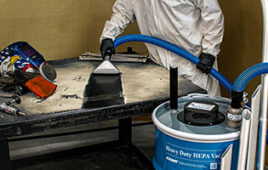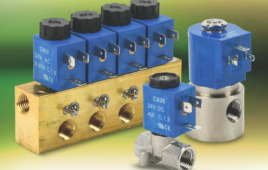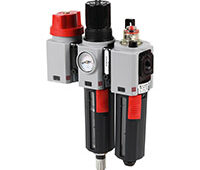New honing technology is improving product performance for fluid power components by providing manufacturers the ability to accurately size and finish valve bores with high process capability (Cpk) levels. The technology can control bore size with quarter-micron accuracy (0.00001-in.), correct geometric errors in the bore, and produce a specific surface finish with lubrication and seal enhancing properties.

Conventional honing straightens a valve bore and precisely sizes it.
Conventional honing straightens a valve bore and precisely sizes it. This action reduces clearance between the bore and mating parts – reducing valve leakage. The tighter fit and correct geometry help lower hysteresis and allows higher operating pressures with overall greater system efficiency. In addition, honing creates surface finishes that wear at a slower rate to enhance valve life. The crosshatch finish left by conventional honing improves the uniformity of the lubricating film between sliding parts for more consistent performance, especially in adverse operating conditions.
Conventional honing is an abrasive machining process involving a tool with expanding stone assemblies that rotates in the cylinder bore, while the tool or part reciprocates rapidly during the process. The honing tool may contact the entire length of the part’s bore, giving this process a unique capability to correct geometric error in bore shape. Honing generates little heat and stress, so the surface integrity of the bore is maintained and can be finished to a specified level of roughness.

The controlled fit, finish, and clearance produced by honing result in a more efficient hydraulic circuit.
In terms of the valve manufacturing process, honing can lower costs for valve makers. Various hole making operations, such as boring, drilling, and reaming can produce excellent tolerances. But when a manufacturer requires a high process capability, such as 1.33 Cpk, for quality purposes, the acceptable tolerance level must shrink to meet this directive. As a rule of thumb, when the target is 1.33 Cpk process capability, manufacturers find they have to hold approximately 75% of the print tolerance. At 1.67 Cpk, it drops to approximately 60% of tolerance, and the average of the measurements needs to be targeted very tightly on the mean of the tolerance. Holes produced satisfactorily on a lathe for years that suddenly have to meet process capability of 1.33 or 1.67 Cpk may require a much narrower bell curve distribution to remain between the upper and lower support limits. “Flyers” at the fringes of the curve become unacceptable.
High process capability requires a machining operation that is easy to dial in with great precision, and be very stable once the process is established.
A lathe, for example, may be near a certain valve, but if tweaked a bit, will jump to a value out of specification and throw off the process. However, a computer-controlled hone can easily reach within 10 millionths of a specified size with the resolution on the feed systems of today’s machines. Now, the variability is very small. In addition, honing allows tailoring of the surface finish and leaves a crosshatch on the bore of the cage.

Honing generates little heat and stress, so the surface integrity of the bore is excellent and can be finished to a specific level of roughness.
Turning and single-pass honing cannot produce conventional honing’s characteristic crosshatch pattern on the bore surface. This pattern can be visualized as two opposing helical patterns that remain on the bore surface. This pattern can be controlled to produce a specific angle and depth which manufacturers use to control the retention and distribution of lubricating oil films. A crosshatch surface ensures a consistent full-length flow path for lubrication around the mating parts of the valve.
Honing also allows tailoring of the bore’s surface finish to a desired specification. An ultra-smooth surface finish will tend to diminish the lubrication between mating parts, increasing frictional resistance. It is common for manufacturers to monitor the surface parameter Ra (average roughness), but parameters such as Rk, Rvk, and Rpk can also be monitored to influence the
performance of mating parts.
Conventional honing improves the performance of valves by correcting geometric error in the part. A conventional honing mandrel, which contacts almost the full length of the bore while the part reciprocates, can correct geometric error (straightness and cylindricity) from screw machining, or
distortion from heat-treating or stress relief.
A single-pass honing tool is tapered so only a part of the tool’s length represents the final size. This part of the single-pass honing tool tends to follow existing path of the bore. So, a curved bore will tend to remain unchanged. This is especially true for parts with a length/diameter ratio exceeding 1:1.
Controlled fit, finish, and clearance produced by honing result in a more efficient hydraulic circuit. The precision size and surface finish help eliminate leakage. Honing reduces hysteresis and improves the low-voltage reliability of electrically actuated valves. This can be an advantage for units installed on mobile equipment. The latest generation of machines is designed to function as fully automated cells with integrated air gaging feedback for closed-loop control of the process. It sorts parts by size after processing, and all the parts fall within a size range of 0.000124-in.
Sunnen Products
www.sunnen.com
::Design World::
Filed Under: Valves, FLUID POWER





Tell Us What You Think!